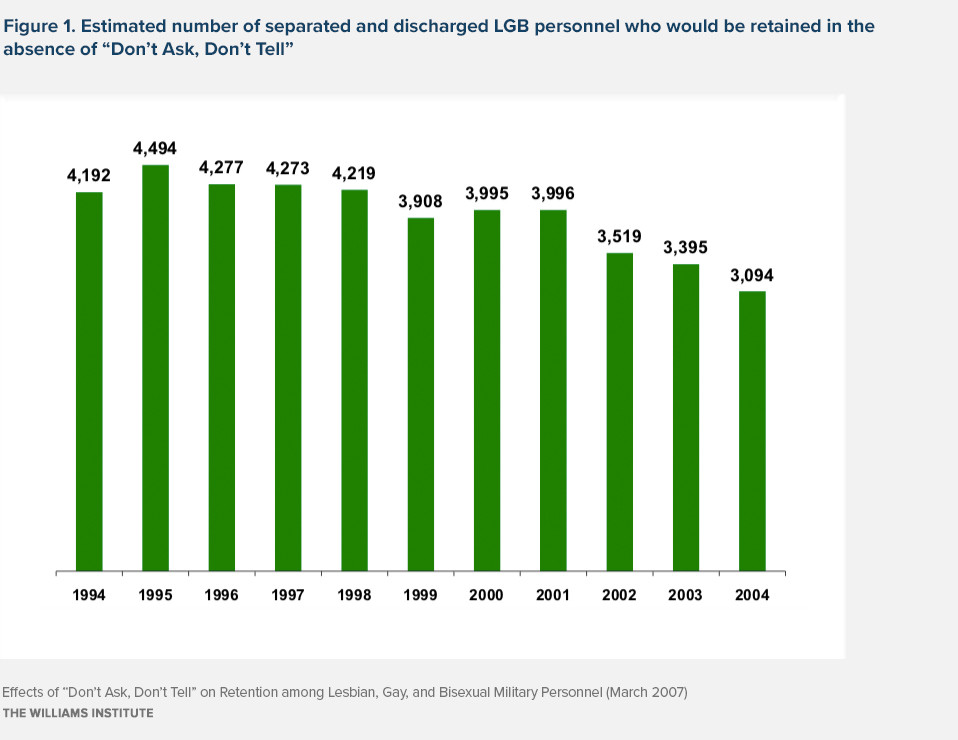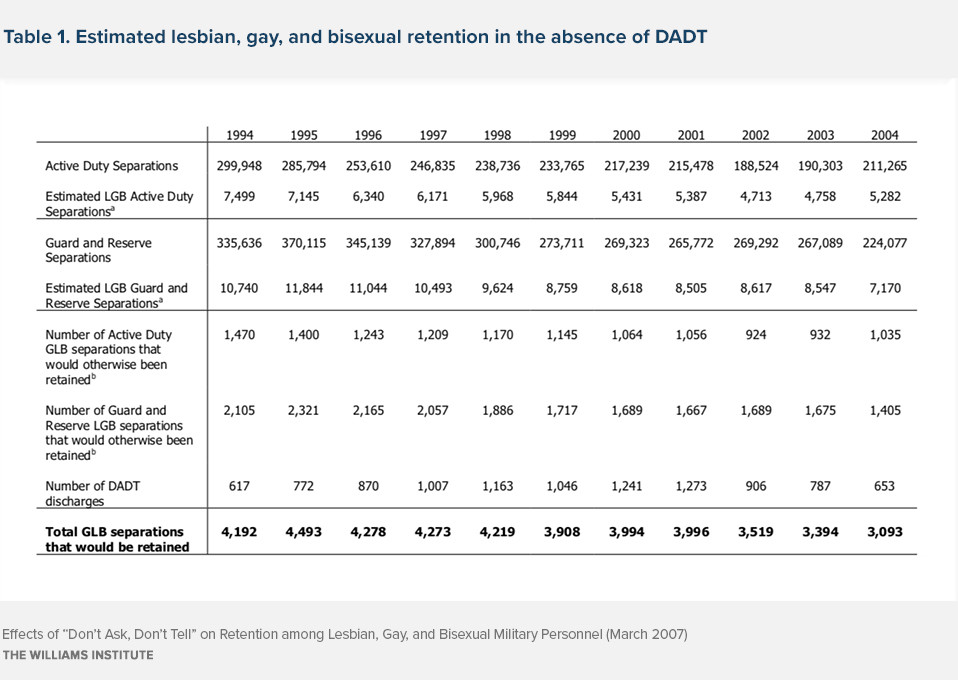This research brief quantifies how the United States military’s “Don’t Ask, Don’t Tell” (DADT) policy affects retention rates among lesbian, gay, and bisexual military personnel. If the “Don’t Ask Don’t Tell” policy had not been instituted, an estimated 4,000 lesbian, gay, and bisexual military personnel would have been retained each year since 1994. The military intends to add more than 18,000 new troops each year for the next five years. If patterns observed in 2004 were to continue for the next five years, the estimated retained LGB personnel would account for nearly one in six of the additional troops required.
What is “Don’t Ask, Don’t Tell”?
The United States military policy known as “Don’t Ask, Don’t Tell” (DADT) requires that lesbians, gay men, and bisexuals (LGB) must remain silent about their sexual orientation and behavior if they are to serve in the military. In turn, the military is restricted from asking personnel about their sexual orientation.
Findings from a survey of LGB veterans suggest that this policy causes many of them to decide not to reenlist and continue their service when they reach the end of their tours of duty or, in the case of officers, resign their commissions at the end of their obligated service.
LGB Retention without DADT
Since the initiation of the DADT policy in 1994, an average of nearly 4,000 LGB military personnel each year on active duty or in the guard or reserves would have been retained if they could have been more open about their sexual orientation (see Figure 1). The estimate for the annual retention of LGB people has generally declined over time due to fewer discharges under the DADT policy coupled with fewer separations.
Estimates for the number of LGB military personnel retained in the absence of DADT for a given year begin with an estimate of the percentage of the total number of LGB individuals separating each year from active duty or the guard and reserves. Gates (2004) estimates that 2.5 percent of active-duty military personnel and 3.2 percent of those in the guard and reserve are LGB. The estimation process assumes that the proportion of LGB individuals among those separating from the military each year is the same as the proportion in the broader military population.
A survey of 445 LGB veterans (Cochran et al. 2005) found that when asked about why they left the military, 19.6 percent said that it was because they could not be open about their sexual orientation. The estimation procedure uses this figure and assumes that in the absence of DADT, 19.6 percent of LGB individuals who separate in a given year would otherwise decide to remain in the military.
Finally, it is assumed that those discharged under the DADT policy would not have been discharged and would remain in military service. Adding the number of annual DADT discharges to the 19.6 percent of LGB separations each year yields an estimate of the number of LGB military personnel retained each year in the absence of DADT.

